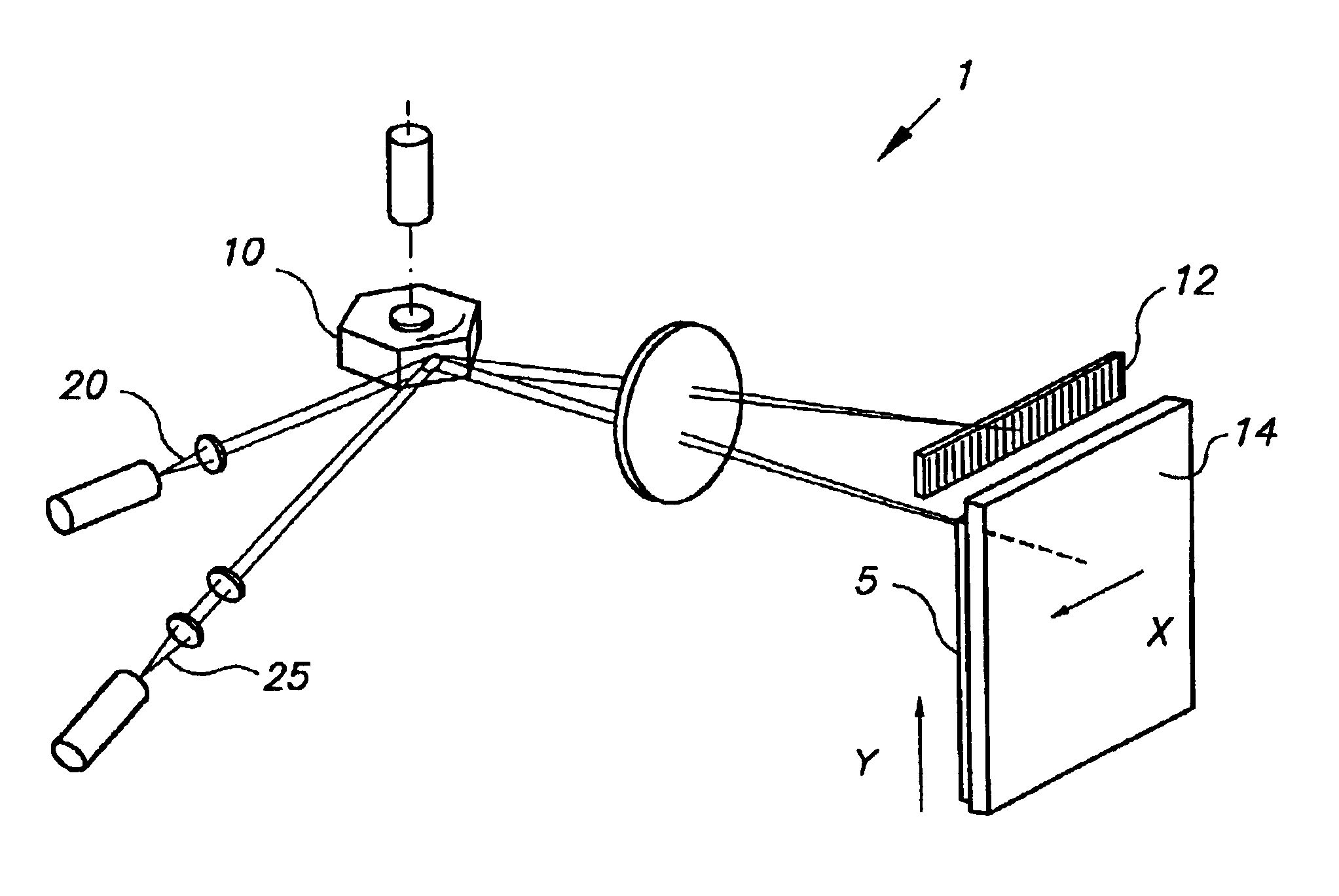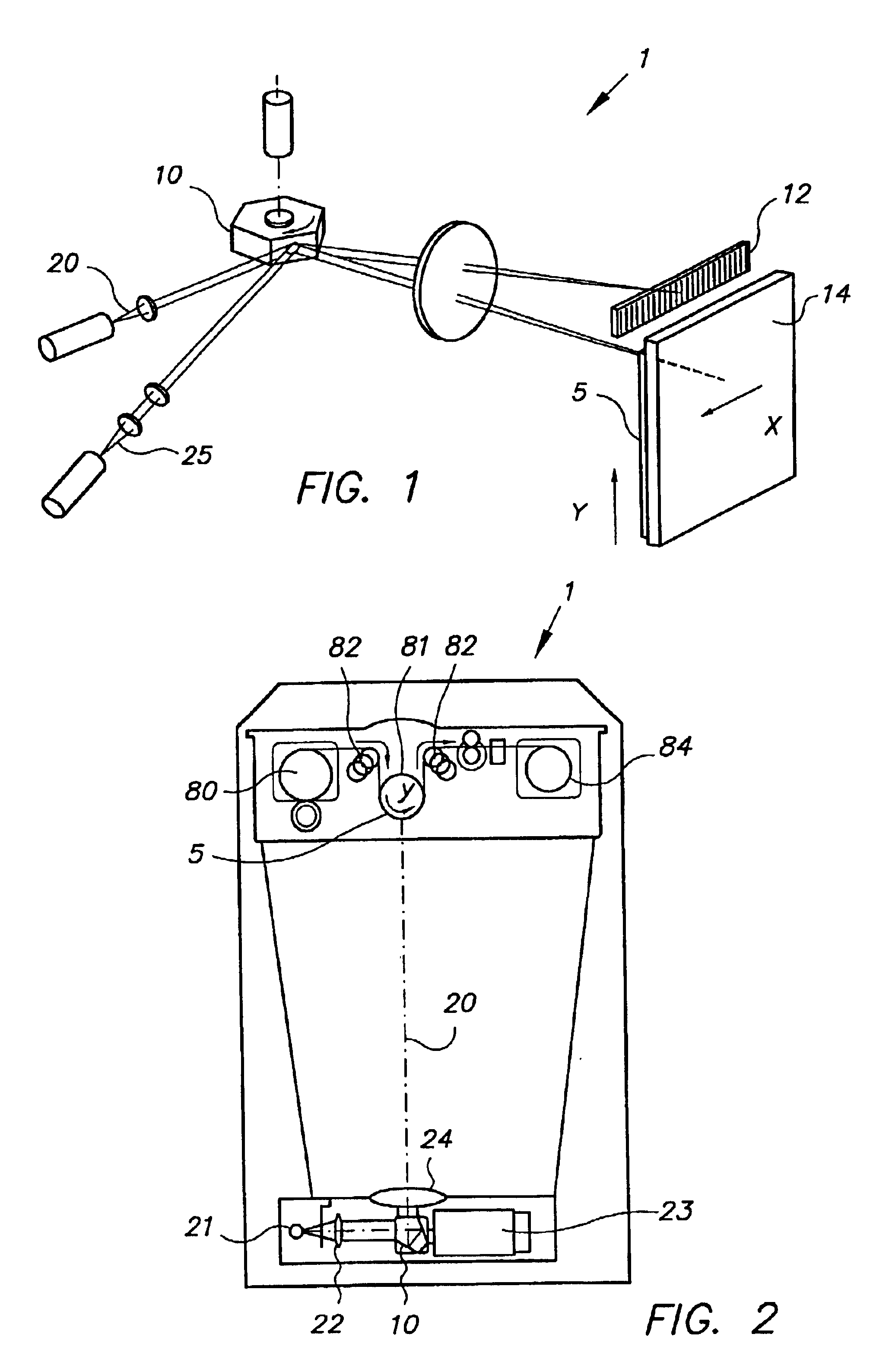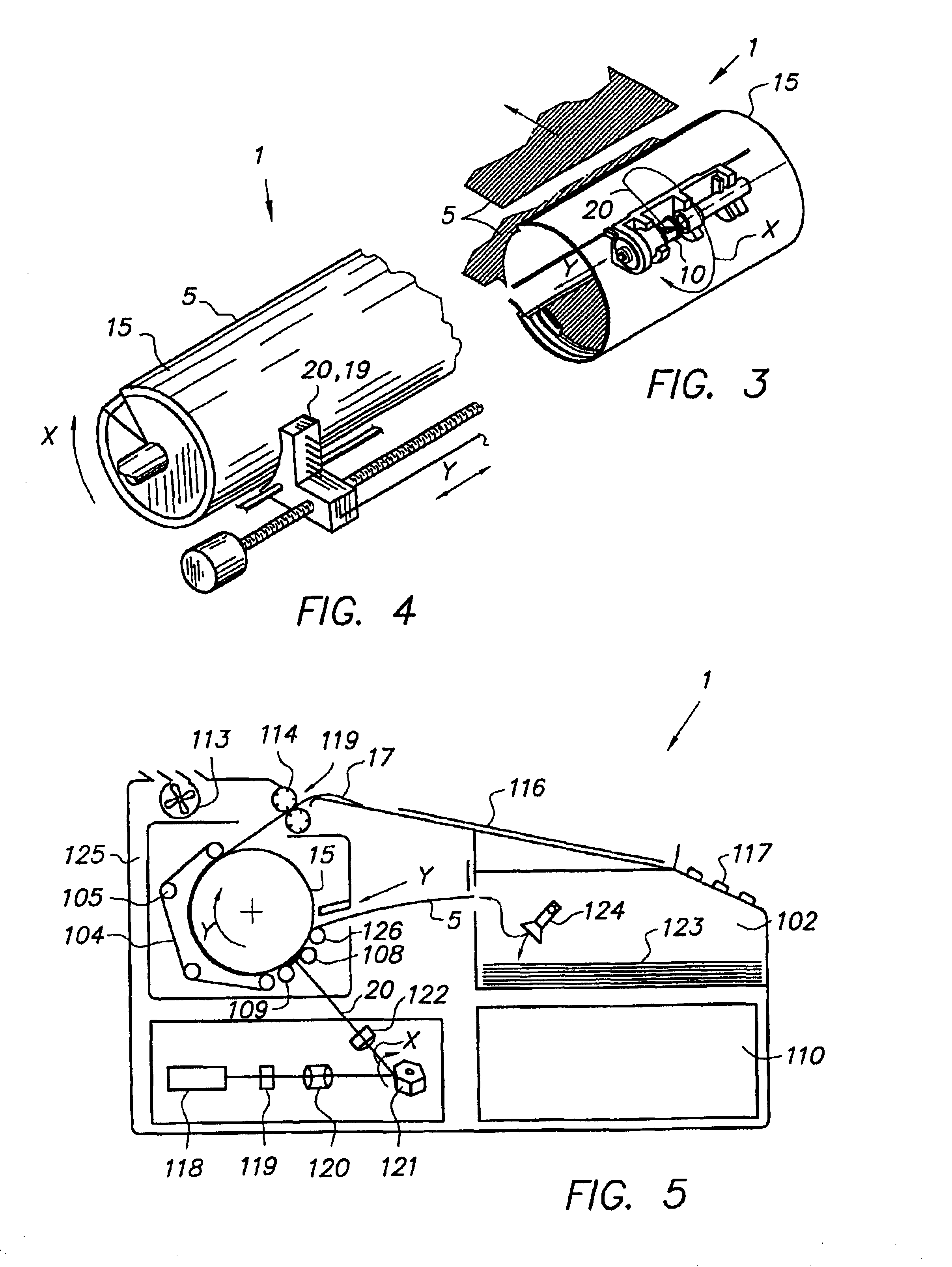Thermal recording by means of a flying spot
- Summary
- Abstract
- Description
- Claims
- Application Information
AI Technical Summary
Benefits of technology
Problems solved by technology
Method used
Image
Examples
Embodiment Construction
All experiments were carried out on an XTD-embodiment as shown in FIG. 6. Practical dimensions of this system (see also FIG. 8.1) included: the diameter D.sub.d of drum 15 being 70 mm, the width of the drum 15 being 250 mm and the width W.sub.m (46) of the thermographic material being 200 mm.
A preferred embodiment of the present invention was tested and evaluated extensively. The controllable parameters mentioned above, are summarized in the following paragraph.
1) Thermographic specifications of the substantially light-insensitive thermographic material m and of the IR-absorber (e.g. spectral bandwidth and sensitivity) were selected from a matrix of available values.
2) The temperature T.sub.p of the drum 15 was controlled in a range between 30.degree. C. and 150.degree. C., more preferably between 50.degree. C. and 120.degree. C., and set most typically at discrete values of 70, 75, 80, 85, 90 and 100.degree. C.
3) As regards the position of the thermographic material 5 with respect ...
PUM
 Login to View More
Login to View More Abstract
Description
Claims
Application Information
 Login to View More
Login to View More - R&D
- Intellectual Property
- Life Sciences
- Materials
- Tech Scout
- Unparalleled Data Quality
- Higher Quality Content
- 60% Fewer Hallucinations
Browse by: Latest US Patents, China's latest patents, Technical Efficacy Thesaurus, Application Domain, Technology Topic, Popular Technical Reports.
© 2025 PatSnap. All rights reserved.Legal|Privacy policy|Modern Slavery Act Transparency Statement|Sitemap|About US| Contact US: help@patsnap.com



